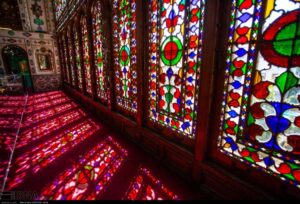The company designs and produces different types of artistic doors and windows dubbed Artwin in a unique way with low cost and high quality.
The CEO of the company says Artwin is a new generation of Iranian art that is integrated with the building industry.
According to Bahram Dabbaghi, these products are made in the form of double-glazed windows with a thickness of one to seven centimetres.
These products use traditional Iranian elements in modern buildings, Honar Online reports.
“This product is a good alternative to the use of hand-made windows in new structures that can be implemented in numerous designs based on the client’s taste,” continued Dabbaghi.

Referring to the outstanding features of these products, he said Artwin can be installed in a variety of metal, wooden, and UPVC frameworks.
“Artistic double-glazed windows are noise-proof, and resistant against temperature, humidity and harmful rays of sunlight. They can also be simply cleaned, while their maintenance and repair is much easier compared to hand-made ones.”
Artwin can transform the white light into the light spectrum, added Dabbaghi.
He said that this product is used in interior and exterior design of buildings, noting that in many public and private places of Isfahan this product has been installed.
The CEO of the knowledge-based company also highlighted that the product’s difference from similar ones is that it is cost-effective, and there are plenty of different designs available.
Sash windows are still a popular part of the Iranian-Islamic architecture. “Orsi” sash windows slide vertically and usually open onto the courtyard. Girih [knot in Persian] wood designs are created with pieces of cut wood and stained glass in various geometric shapes, aligned repeatedly alongside one another.
A prime example of this art in Iran is the Chehel Sotoun edifice in Isfahan. A number of historic houses in kashan, and Yazd also display the art.
Such doors and windows were widely used in the hot, arid climate of central Iran to adjust and soften the penetrating light.
This wood art can be seen in religious venues, such as Imam Reza’s holy shrine in Mashhad, northeastern Iran.
